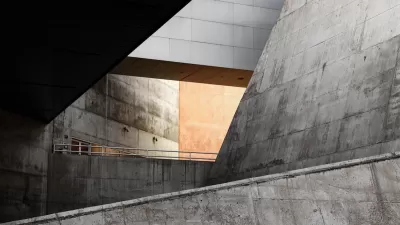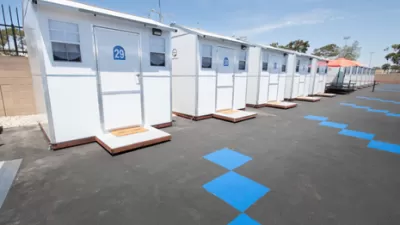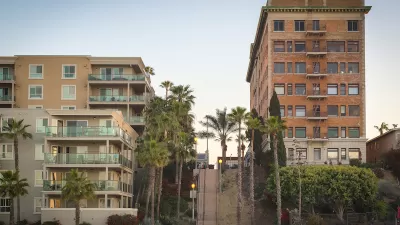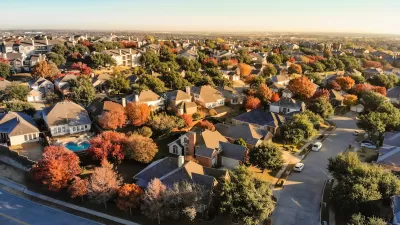A new study makes a visual case against the narrative that spot zoning and a broken development approval process are running roughshod over the entire city.

Steven Sharp shares news of a new study [pdf] released by the UCLA Anderson Forecast and the UCLA Ziman Center for Real Estate that puts the planning and development approvals process in context by aggregating all of Los Angeles' zoning changes for specific parcels, which the study describes as "spot zoning."
The study comes at a time of controversy over the planning process and the impacts of development in the city. The findings of the report, however, probably run counter to the narrative of runaway development preferred by advocates for the Neighborhood Integrity Initiative.
Authored by C.J. Gabbe, the study identifies properties with zoning changes of two kinds: those that allowed for more residential density and those that allowed for less density. Here Gabbe summarizes the findings:
Zoning designations were largely static: On average, the City upzoned 225 acres and downzoned 216 acres annually between 2002 and 2014. (Los Angeles' total land area is about 300,000 acres.) That is less than two-tenths of one percent of its land area every year.
Another provocative layer of conclusion drawn from the report's findings: in Los Angeles, "the most desirable neighborhoods with access to valuable amenities are also the most difficult to upzone."
FULL STORY: When and Where Does Upzoning Actually Happen?

What ‘The Brutalist’ Teaches Us About Modern Cities
How architecture and urban landscapes reflect the trauma and dysfunction of the post-war experience.

USDOT Revokes Approval for NYC Congestion Pricing
Despite the administration’s stated concern for the “working class,” 85 percent of Manhattan commuters use public transit to enter the city.

Tiny House Villages for Addressing Homelessness: An Interview with Yetimoni Kpeebi
One researcher's perspective on the potential of tiny homes and owner-built housing as one tool to fight the housing crisis.

Preserving Altadena’s Trees: A Community Effort to Save a Fire-Damaged Landscape
In the wake of the Eaton Fire, Altadena Green is working to preserve fire-damaged but recoverable trees, advocating for better assessment processes, educating homeowners, and protecting the community’s urban canopy from unnecessary removal.

The VW Bus is Back — Now as an Electric Minivan
Volkswagen’s ID. Buzz reimagines its iconic Bus as a fully electric minivan, blending retro design with modern technology, a 231-mile range, and practical versatility to offer a stylish yet functional EV for the future.

Investigation Reveals Just How Badly California’s Homeless Shelters are Failing
Fraud, violence, death, and chaos follow a billion dollar investment in a temporary solution that is proving ineffective.
Urban Design for Planners 1: Software Tools
This six-course series explores essential urban design concepts using open source software and equips planners with the tools they need to participate fully in the urban design process.
Planning for Universal Design
Learn the tools for implementing Universal Design in planning regulations.
Economic & Planning Systems, Inc.
UCLA Lewis Center for Regional Policy Studies
Mpact (formerly Rail~Volution)
Chaddick Institute at DePaul University
City of Piedmont, CA
Great Falls Development Authority, Inc.
HUDs Office of Policy Development and Research





























